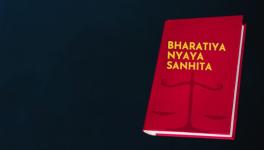Sadabahar, the Tawaif
Tawaifs have played a crucial role in the social and cultural life of northern India. They were skilled singers and dancers, and also companions and lovers to men from the local elite. It is from the art practice of tawaifs that kathak evolved and the purab ang thumri singing of Banaras was born. At a time when women were denied access to the letters, tawaifs had a grounding in literature and politics, and their kothas were centres of cultural refinement. Yet, as affluent and powerful as they were, tawaifs were marked by the stigma of being women in the public gaze, accessible to all.
In Tawaifnama, through the stories and self-histories of a family of well-known tawaifs with roots in Banaras and Bhabua, Saba Dewan explores the nuances that conventional narratives have erased, papered over or wilfully rewritten.
The following is an excerpt from the chapter "Sadabahar, the Tawaif" of the book.
‘Sadabahar’s life as a popular tawaif in Shahabad shimmered with the light and colour of mehfils No musical gathering, includingthose organised by the biggest Rajput zamindars and rajas of the region, was deemed a success unless Sadabahar had performed init. Her earnings were considerable, making her family the best-off among tawaifs in Chainpur. Bit by bit, Bullan and Kallan were able to free the house and agricultural lands that they had mortgaged to take care of Sadabahar and Gulshan.’
Sadabahar was the only tawaif in Chainpur, you say with obvious pride, who had her own horse-drawn carriage. She loved going out on rides with its hood drawn back, revelling in the looks of admiration and envy that came her way.
I am reminded of a similar anecdote about the acclaimed tawaif-diva Gauhar Jan of Calcutta in the late nineteenth–early twentieth century, who enjoyed taking evening rides through the city in her carriage drawn by four white horses. A particularly favoured route, it seems, went through the white quarters of Calcutta, in flagrant violation of the law that denied access to Indians. Gauhar is supposed to have thought nothing of paying a hefty fine whenever the desire to ride through the white area overtook her.
The tawaif here is a figure charged with sexuality, and proclaiming with flamboyant confidence not only pride in her identity as a public woman but also her power to access and use at will the public space, a privilege reserved for men from the feudal aristocracy and Europeans. This reversal of socially sanctioned gender rules is reflected in your telling of Sadabahar’s story as well.
At her home in Chainpur, Sadabahar was looked after much like senior earning male members are in patriarchal households. A mini-army of relatives and retainers lived in Bullan and Kallan’s house, dependent entirely upon her generosity for their survival. Inreturn, they were obliged to make themselves useful. If Sadabahar wanted a hot meal on her return home after a late-night performance, then someone would be woken up to cook whatever she desired. If she complained of aching limbs, someone wouldgive her a massage, all night long if necessary.
Saba Dewan is a documentary film-maker. Her documentaries have focused on issues of gender, sexuality and culture. This is her first book and has emerged from her trilogy of films on stigmatised women performers: Delhi–Mumbai–Delhi (2006) about the lives of bar dancers; Naach (The Dance, 2008) on women dancers in rural fairs and The Other Song (2009) about the art and lifestyle of the tawaifs or courtesans.
Get the latest reports & analysis with people's perspective on Protests, movements & deep analytical videos, discussions of the current affairs in your Telegram app. Subscribe to NewsClick's Telegram channel & get Real-Time updates on stories, as they get published on our website.
























